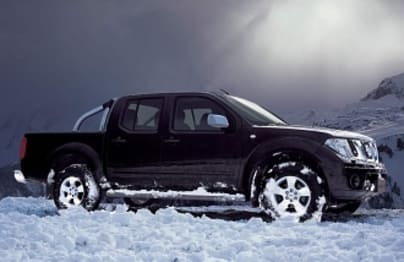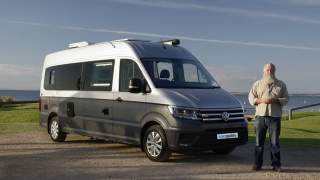
Used Ford Ranger review: 2006-2009
- Ford Ranger
- Ford Ranger 2008
- Ford Ranger 2009
- Ford Ranger 2007
- Ford Ranger Reviews
- Ford Reviews
- Ford Commercial Range
- Ford Ute Range
- Commercial
- Ute
- Ford
- Used Car Reviews

What we like
- Huge step up from Courier
- 3.0-litre good for towing
- Decent ride & handling
What we don't
- Rear passengers cramped, even in dual-cab
- Expensive clutch repair
- Watch out for several recalls
What we like
- Huge step up from Courier
- 3.0-litre good for towing
- Decent ride & handling
What we don't
- Rear passengers cramped, even in dual-cab
- Expensive clutch repair
- Watch out for several recalls
The humble utility has always been a sentimental favourite of Australians, but nobody could have guessed it would become the nation’s most popular car.
Along the way to market leadership the ute has gone from humble workhorse to fully-loaded all-purpose vehicle for townies as much as bushies.
Ford’s Ranger has been one of those models to ride the wave of popularity from its introduction in 2006.
Before that it was known as the Courier, the change of name a perfect illustration of the ute’s new position in the market.
Models
The most telling thing about the changed position of the ute in the Australian market is the name change Ford made with its Thailand-built ute.
It was once called the Courier, an uninspiring badge that said everything about its role as a basic workhorse, a dull delivery vehicle, and that’s the way Ford thought about it.

The Ranger nametag that arrived with the PJ model in 2006 changed the whole persona of the model. It was now adventurous, tough, and rugged, something you could aspire to own. At least that’s what the marketing gurus would have us believe.
Designed and built in Thailand in tandem with the Mazda BT-50 Ford gave the Ranger a tougher look that fell more into line with the look of its popular American pick-ups.
There was a range of models, including cab-chassis and pick-ups, with single-cab, extended super-cab, and dual-cab body styles. All were diesels, and you could have four-wheel drive or rear-wheel drive.
The cab-chassis was available in base XL form, with rear- or four-wheel drive, single-cab, super-cab, or dual-cab bodies, and either a 2.5-litre or 3.0-litre turbo-diesel engine.
As a pick-up it came as an XL or XLT, with rear- or four-wheel drive, the choice of single-, super- or dual-cab bodies, and either a 2.5-litre or 3.0-litre turbo-diesel engine.
The XL came equipped with dual front airbags, power steering, radio and CD player with two speakers, and seat belt pretensioners.
At the launch there was no air conditioning in the cab-chassis, but there was in the pick-up.
Things changed in November 2007 with the addition of a number of features, including power windows, power mirrors, remote central locking, an immobiliser, and air conditioning across the range.

The XLT boasted more features, including 16-inch alloy wheels, ABS anti-lock braking, side front airbags, emergency brake assistance, and an alarm.
There were none of the things expected of a current car.
With no Bluetooth it wasn’t possible to connect an iPhone or an Android device, there was no touch screen, and the air conditioning wasn’t climate control.
Parking features like a reversing camera, parking sensors, or park assistance weren’t available.
There was no sat-nav available either, and a sunroof wasn’t offered.
The spare tyre was a full-sized one.
Cabin
The cab you chose determined the number of seats you could have.

If you went for the basic single-cab you got a bench seat that limited you to three, the super-cab with its short rear-hinged rear doors gave you four, while the dual-cab with its full length front-hinged rear doors stretched the capacity to five seats.
The driver sat quite high in all cabs, slightly higher in the four-wheel drive models, which ensured a good view of the road ahead.
Single-cab drivers had to endure the bench seat, which was comfortable enough, but not as comfy as the bucket seats in the super-cab or the dual-cab.
Rear passengers were somewhat cramped in the super-cab, which was suited more to short trips than longer ones, but those in the dual-cab had more reasonable head and legroom.

The layout of the cab was functional, but neat and tidy. All controls were well within reach of the driver, and there was the convenience of cupholders in the front.
Lap sash seat belts facilitated the use of a baby car seat, but there were no ISOFIX mounting points for easy installation.
Engine
Ford chose not to offer a petrol engine option in the Ranger, instead offering a choice of two four-cylinder common-rail turbo-diesel engines, one a 2.5-litre, the other a 3.0-litre.
Both engines were double-overhead camshaft and had fuel injection.
Being larger the 3.0-litre engine had more power and torque for better performance than the 2.5-litre.

At its power and torque peaks it put out 115kW (154 horsepower), and 380Nm, compared to the 105kW (140 horsepower) and 330Nm of the smaller engine.
That gave the bigger engine better performance, particularly for off-road work, but came at the expense of higher fuel consumption.
On average the 3.0-litre gave 9.2L/100km compared to 8.5L/10km from the 2.5-litre.
The transmission options were a five-speed manual gearbox or a five-speed automatic transmission.
Final drive was either rear-wheel drive or dual-range four-wheel drive with a limited slip centre diff.
Driving
Despite being a workhorse and having to carry a load the Ranger drove quite well; with its independent front suspension it was a decent handler and rode reasonably comfortably, even with the semi-elliptic leaf spring rear suspension.
The 3.0-litre was the better performer of the two, and the most desirable when it came to towing.
Inside it was relatively roomy, the seats were comfortable, and road noise wasn’t overly intrusive.
Safety
The PJ Range was rated at three (from a possible five) stars by ANCAP.
All models came with safety features including front airbags for the driver and front passenger.
The XLT was the best equipped; it had front airbags and side airbags for the front passengers.
It also had ABS anti-lock braking and electronic brakeforce distribution.
Any common issues?
Reports from the field suggest the reliability of the PJ Ranger is good; few problems of note were reported.
One that can crop up is the clutch on those with the manual gearbox. Normal wear and tear can see the clutch worn out in less than 100,000km. When it does expect the dual-mass flywheel to need replacing at the same time, which makes it an expensive exercise.
When inspecting a Ranger prior to purchase look for damage caused by careless employees on the worksite; or on four-wheel drive models look for off-road abuse.
The warranty when new was for three years/100,000km.
Servicing was recommended every 15,000km or 12 months, and capped price servicing didn’t apply.
The engines have a timing chain, so there’s no service required.
It is a straight forward vehicle to service and shouldn’t cost an arm and a leg for a local mechanic do it.
A recall in 2010 alerted owners to the possibility of a fatigue crack developing around the bonnet striker when driven for extended periods in tough going. If it did crack the bonnet could come open while driving.
PJ models that were fitted with cruise control as a genuine Ford accessory were affected by a recall in 2011. Owners could have found problems setting or cancelling the cruise.
There was also a recall in 2012 relating to the potential of a crack developing around the tow bar tongue.
MORE: If anything crops up, you’ll probably find it on our Ford Ranger problems page.
Owners view
Tim Foster: My XL single-cab is smooth to drive, the interior is well appointed, and has been reliable, but the fuel consumption isn’t great and the ride is a bit bumpy.
Frank Robinson: I bought my XL double-cab new in 2006, and it’s been great to date.
Stephen Coote: I’ve owned my XL super-cab for eight years. I find the cabin roomy, the ride comfortable compared to other utes of its type, the turning circle is better than most, and the engine pulls our tandem caravan easily. I replaced the clutch at 75,000km.
Peter Wilson: I have no regrets buying my 2.5-litre XLT dual-cab. It’s been great, the reliability impeccable, but I would like more legroom.
Trevor Ryan: I bought my Ranger second hand with 97,000km on the clock. I have had it eight years and it does everything I want, it tows well, is economical, and has been reliable.
Rivals
Toyota HiLux
The class leader has a reputation for toughness and reliability that makes it hard to beat.
Nissan Navara
Big comfortable ute a worthy contender with a wide choice of models.
Mitsubishi Triton
A decent all rounder, suspension can sag under heavy workload.
Verdict
A good all-round workhorse/getaway vehicle that is reliable and performs well.
Pricing guides
Range and Specs
| Vehicle | Specs | Price* | |
|---|---|---|---|
| XL (4X2) | 2.5L, Diesel, 5 SP MAN | $5,830 – 8,140 | 2007 Ford Ranger 2007 XL (4X2) Pricing and Specs |
| XL (4X4) | 3.0L, Diesel, 5 SP MAN | $10,230 – 14,080 | 2007 Ford Ranger 2007 XL (4X4) Pricing and Specs |
| XLT (4X4) | 3.0L, Diesel, 5 SP AUTO | $13,530 – 17,820 | 2007 Ford Ranger 2007 XLT (4X4) Pricing and Specs |
Other cars to consider
$4,999
Lowest price, based on 61 car listings in the last 6 months










